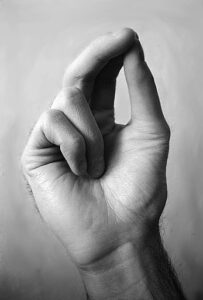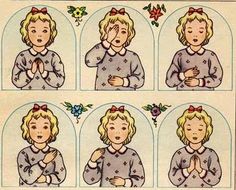Significance and Importance of the ‘Sign of Cross’

The Sign of the Cross is a holy, life-giving symbol of our salvation, the principal symbol of the Christian religion, symbol of our deliverance and emblem of the mercy of God, giving redemption to sinful man. It is a symbol of recalling the Crucifixion of Jesus Christ and the redeeming benefits of his Passion and death. A sign of protection, a sign of gratitude and cure for all wounds. The sign of the Cross is a powerful weapon against our spiritual adversaries and temptations from demons and a remedy against evils. The Sign of Cross is an extraordinarily rich, ancient Christian practice and a religious sign, instituted by the Apostles and followed from the early ascetics down to the present day and should be second nature to anyone who claims to be an Orthodox Christian.
The Cross is thus a sign of both of Christ Himself and of the faith and badge of Christians. It recalls and reminds, the one who makes it and to those who see it made, that Jesus Christ is the Lord of our whole life, and that God has loved us so much, that He give Himself up for our sakes to suffer on the Cross, reiterating that we must love Him with our whole hearts. Making the sign of Cross is a holy sign, signifying many mysteries of the commemoration of the salvific action and is considered as the most abridged form of prayer when we do it in the correct sublime sense. The Sign of the Cross rightly made unites the soul to God, gives to the Christian the spirit of faith and preserves him from distraction and from worldliness.
The sign of the Cross is both unspoken and a confession of faith, a fundamental element of Orthodox life and the badge and outward sign and expression of inner prayer of a Christian. In making the sign of the Cross a person prays with his whole being. It is a silent and meaningful worship by itself. With the sign of the Cross, we appeal to the redeeming death of the Son of God on the Cross, and with this, sign of victory, we banish the devil and evil thoughts and feelings that creep into our minds. The great spiritual advantage of making a habit of this is that, when we are confronted with a dangerous or compromising situation, we will make the Sign of the Cross without hesitation. This might save our life or even our soul, work miracles and cure diseases depending on the circumstance.

Hold the three fingers – thumb, index, and middle finger of the right hand together, with the tip of the index finger projecting slightly. The three fingers symbolize the Three Persons of the Holy Trinity, the source of all life and all good: God the Father, God the Son and God the Holy Spirit. The fourth and the fifth finger closed on the palm, expresses that the power of our heart, mind, soul, and strength are dedicated to the service of God. Then bow our heads. The bowing of heads is a sign of humility and reverence, whereby we are in fact bowing our inner self before The Triune God. Touch the index finger to the forehead and descend to the chest. This signifies the vertical arm of the Cross and Incarnation of the Second Person of the Holy Trinity, who came down heaven to earth, for our salvation. Then take the fingers from the left shoulder to the right shoulder. Signifies the horizontal arm of the Cross and the very fact that the children of the left side /darkness and of sins were converted and brought as children of right side / light and of God.

A believer who makes the sign of cross thoughtfully, experiences Lord Jesus Christ invariably as it sums up the whole Christian faith in a single ritual act. Making the sign of cross embodies the theology of Incarnation. To recall to mind, the full implications of making the sign of cross, it should be done slowly, meaningfully, and thoughtfully. We must never fear to make the Sign of the Cross when required, with reverence and devotion. If made with negligence, it loses all its influence, sanctity, power and virtue.
The Sign of the Cross may be made by individuals upon themselves as a form of prayer and personal devotions, and by the clergy upon others or objects as an act of blessing, during public worship and sacraments. The sign of the Cross is a prayer, a blessing, an act of profession of faith, a dedication, a benediction and sacramental. The Sign of the Cross is to be used in virtually every situation in life. All the blessings are given with the sign of the Cross, the simple religious act which is so universal and can be so frequently practiced during, the course of the day.
The faithful should make the sign of the Cross
- While we enter the Church and before leaving the Church.
- When we begin and end a prayer.
- When we speak or mentally recite of the trinitarian formula: “In the name of the Father, and of the Son, and of the Holy Spirit. Amen.
- When the called-out ones enter and leave the Holy Sanctuary (Holy Madbhaha), while kissing the Holy Altar, Evangelion Mesha.
- When priest encircles, censing the Holy Altar, bowing at the four corners of it, at the beginning of the Public Celebration of Holy Eucharist, the faithful also bow before the Lord, we cross to the censing to confess the gospel and their faith in Jesus Christ.
- At the time of blessing of the censor
- Waving the censor to the congregation by the deacon, priest, or bishop during worship.
- When we recite the words Barekmor, Holy Trinity or when we receive blessings in our liturgy
- Before and after receiving the Holy Body and Blood of our Lord (Holy Qurbana)
- When we recite the words ‘Sleeba’ or when we remember the Cross, Passion and Crucifixion of our Lord, His death on the cross in our prayers.
- While kissing the Hand Cross and the bishop’s hand at the reception of blessings.
- When the celebrant blesses the faithful during benedictions (thrice)
- When the priest makes the sign of cross towards the faithful (Rooshma)
- During the Institution, Invocation, Epiclesis, Elevation and Second Coming in Holy Qurbana
- In common prayer at the outset of the prayer, thrice at the time of Trisagion, thrice at the recital of the praise of Cherubim, thrice at the time of the Creed, thrice at the time of morning prayer and when we remember the Cross.
- The sign of Cross is always, associated with a bow to the object of prayer, the invisibly present God. First, we peacefully make the sign of the Cross and then we bow or do prostration. By making the sign of the Cross we abide in the protective shade of the Holy Cross.
- While passing a Church, Cross Tower, before the relics of saints or even a hospital
- Before and after starting a journey, reading the Holy Bible, studies, or any event.
- Before and after having food, before we sleep and when we wake up, we should automatically make the Sign of the Cross.
- Let us make it often, but especially when tempted and when troubled. “Whenever anything disagreeable or displeasing happens to you, remember Christ Crucified and be silent and make the sign of Cross.” ~St John of the Cross
Church father Tertullian who lived during AD 160-230 says, “At every forward step and movement, at every going in and out, when we put on our clothes and shoes, when we bathe, when we sit at table, when we light the lamps, on couch, on seat, in all the ordinary actions of daily life, we trace upon the forehead the sign (of cross)”
The Sign of the Cross was such an integral part of Christian life in the Early Church. It was an oral, living tradition which every Christian took for granted. Saint Basil refers to the Sign of the Cross as “the first and most general example” of an oral tradition.
- Saints and Martyrs of all ages have been delivered from fire, wild beasts, demonic attack, carnal temptations, and poison by fidelity to this ancient tradition: The mysterious power of the Cross, however inexplicable, is true and indisputable.
- Saint John Chrysostom says, ‘we are striving to drive out demons, we use the Cross, and it is also of aid in healing sickness.’
- St Benedict made the sign of the Cross over a glass containing poison and the glass shattered as if struck by a stone.
- St Julian made the sign of the Cross over a cup of poison brought to him, and drank the poison, suffering no bodily harm from it.
There are many references in the Lives of the Saints from Apostolic times down to the present day which testify to the power and security an Orthodox Christian can experience through the pious act of making the Sign of the Cross over himself.
1 Comment
Prassanna · June 24, 2021 at 9:09 pm
Kurush a Raksha Kurishil aanu Raksha Kurush aanu Ente Raksha.Thankyou Jesus for your sacrifice on the Cross for me a Sinner Amen